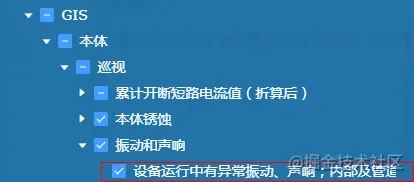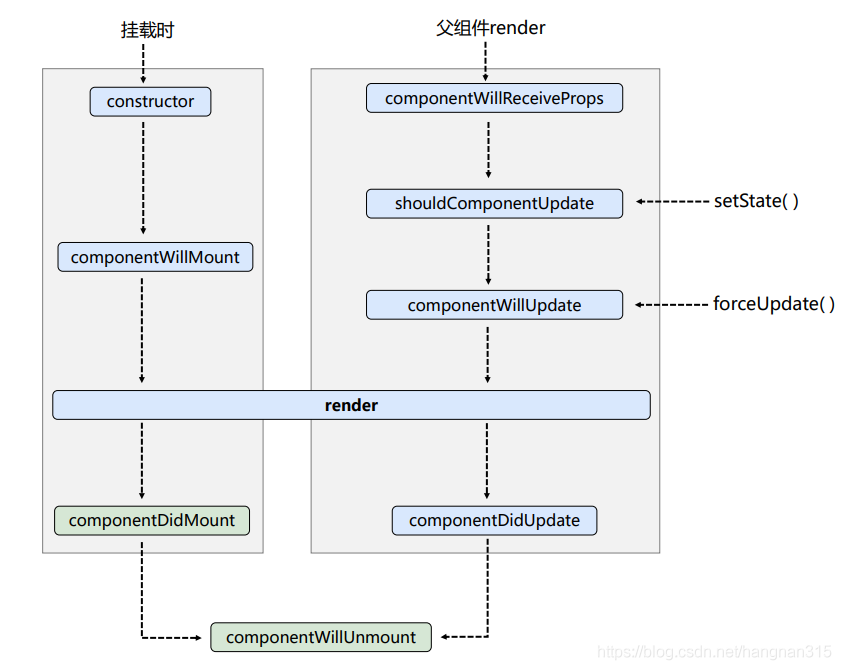目录
- React中安装并引入axios依赖
- 使用axios进行GET请求
- 使用axios.get方式
- 使用axios(config {…})
- 使用axios进行POST请求
- 使用axios.post
- 使用axios(config {…})
- 同时发送多个请求
- 详细config对象配置项
- axios的返回值对象response
- axios的全局配置
- axios的单一实例化配置
- axios拦截器的使用
React中安装并引入axios依赖
在React项目中使用axios请求,首先需要安装axios:
npm install axios --save
然后在react文件中使用typescript方式导入axios依赖:
import axios from 'axios';
使用axios进行GET请求
axios中使用GET请求时有两中方式:
- 一种是使用axios.get的方式进行
- 一种是使用axios(config { … })的方式进行
使用axios.get方式
使用封装的axios.get进行请求的常用格式如下:
// Make a request for a user with a given ID
axios.get('/getUser?id=12345')
.then(function (response) {
// handle success
console.log(response);
// update state or do something
this.setState({
// ...
})
})
.catch(function (error) {
// handle error
console.log(error);
})
.then(function () {
// always executed
});
// Optionally the request above could also be done as
axios.get('/getUser', {
params: { // 这里的参数设置为URL参数(根据URL携带参数)
id: 12345
}
})
.then(function (response) {
console.log(response);
})
.catch(function (error) {
console.log(error);
})
.then(function () {
// always executed
});
// Want to use async/await? Add the `async` keyword to your outer function/method.
async function getUser() {
try {
const response = await axios.get('/getUser?id=12345');
console.log(response);
} catch (error) {
console.error(error);
}
}
使用axios(config {…})
使用axios(config {…}) 的方式发送GET请求格式如下:
axios({
method: 'get',
url: '/getUser',
params: {
id: 12345,
}
})
.then(function (response) {
console.log(response);
});
以上的get请求发送的URL均为如下:
http:HOST_IP:XXXX/getUser?id=12345
使用axios进行POST请求
同GET请求一样,使用POST也有两种请求方式。
使用axios.post
axios.post('/createUser', {
firstName: 'Fred',
lastName: 'Flintstone'
})
.then(function (response) {
console.log(response);
})
.catch(function (error) {
console.log(error);
});
使用axios(config {…})
// Send a POST request
axios({
method: 'post',
url: '/createUser',
data: { // 这里data中的参数为requestBody参数,服务端需要使用@RequestBody注解进行获取
firstName: 'Fred',
lastName: 'Flintstone'
}
}).then(function (response) {
console.log(response);
}).catch(function (error) {
console.log(error);
});
需要注意的是,在使用axios(config {})方式进行GET或POST请求发送时,GET请求中params为URL参数,POST请求中data为RequestBody参数,在服务端需要使用@RequestBody注解接收,Spring Boot能够自动解析为Java相应的对象。
同时发送多个请求
使用axios也可以一次发送多个请求:
function getUserAccount() {
return axios.get('/user/12345');
}
function getUserPermissions() {
return axios.get('/user/12345/permissions');
}
axios.all([getUserAccount(), getUserPermissions()])
.then(axios.spread(function (acct, perms) {
// Both requests are now complete
}));
详细config对象配置项
在axios的readme文档中,有对config对象的具体配置说明,如下:
{
// `url` is the server URL that will be used for the request
url: '/user',
// `method` is the request method to be used when making the request
method: 'get', // default
// `baseURL` will be prepended to `url` unless `url` is absolute.
// It can be convenient to set `baseURL` for an instance of axios to pass relative URLs
// to methods of that instance.
baseURL: 'https://some-domain.com/api/',
// `transformRequest` allows changes to the request data before it is sent to the server
// This is only applicable for request methods 'PUT', 'POST', 'PATCH' and 'DELETE'
// The last function in the array must return a string or an instance of Buffer, ArrayBuffer,
// FormData or Stream
// You may modify the headers object.
transformRequest: [function (data, headers) {
// Do whatever you want to transform the data
return data;
}],
// `transformResponse` allows changes to the response data to be made before
// it is passed to then/catch
transformResponse: [function (data) {
// Do whatever you want to transform the data
return data;
}],
// `headers` are custom headers to be sent
headers: {'X-Requested-With': 'XMLHttpRequest'},
// `params` are the URL parameters to be sent with the request
// Must be a plain object or a URLSearchParams object
params: {
ID: 12345
},
// `paramsSerializer` is an optional function in charge of serializing `params`
// (e.g. https://www.npmjs.com/package/qs, http://api.jquery.com/jquery.param/)
paramsSerializer: function (params) {
return Qs.stringify(params, {arrayFormat: 'brackets'})
},
// `data` is the data to be sent as the request body
// Only applicable for request methods 'PUT', 'POST', and 'PATCH'
// When no `transformRequest` is set, must be of one of the following types:
// - string, plain object, ArrayBuffer, ArrayBufferView, URLSearchParams
// - Browser only: FormData, File, Blob
// - Node only: Stream, Buffer
data: {
firstName: 'Fred'
},
// syntax alternative to send data into the body
// method post
// only the value is sent, not the key
data: 'Country=Brasil&City=Belo Horizonte',
// `timeout` specifies the number of milliseconds before the request times out.
// If the request takes longer than `timeout`, the request will be aborted.
timeout: 1000, // default is `0` (no timeout)
// `withCredentials` indicates whether or not cross-site Access-Control requests
// should be made using credentials
withCredentials: false, // default
// `adapter` allows custom handling of requests which makes testing easier.
// Return a promise and supply a valid response (see lib/adapters/README.md).
adapter: function (config) {
/* ... */
},
// `auth` indicates that HTTP Basic auth should be used, and supplies credentials.
// This will set an `Authorization` header, overwriting any existing
// `Authorization` custom headers you have set using `headers`.
// Please note that only HTTP Basic auth is configurable through this parameter.
// For Bearer tokens and such, use `Authorization` custom headers instead.
auth: {
username: 'janedoe',
password: 's00pers3cret'
},
// `responseType` indicates the type of data that the server will respond with
// options are: 'arraybuffer', 'document', 'json', 'text', 'stream'
// browser only: 'blob'
responseType: 'json', // default
// `responseEncoding` indicates encoding to use for decoding responses
// Note: Ignored for `responseType` of 'stream' or client-side requests
responseEncoding: 'utf8', // default
// `xsrfCookieName` is the name of the cookie to use as a value for xsrf token
xsrfCookieName: 'XSRF-TOKEN', // default
// `xsrfHeaderName` is the name of the http header that carries the xsrf token value
xsrfHeaderName: 'X-XSRF-TOKEN', // default
// `onUploadProgress` allows handling of progress events for uploads
// browser only
onUploadProgress: function (progressEvent) {
// Do whatever you want with the native progress event
},
// `onDownloadProgress` allows handling of progress events for downloads
// browser only
onDownloadProgress: function (progressEvent) {
// Do whatever you want with the native progress event
},
// `maxContentLength` defines the max size of the http response content in bytes allowed
maxContentLength: 2000,
// `validateStatus` defines whether to resolve or reject the promise for a given
// HTTP response status code. If `validateStatus` returns `true` (or is set to `null`
// or `undefined`), the promise will be resolved; otherwise, the promise will be
// rejected.
validateStatus: function (status) {
return status >= 200 && status < 300; // default
},
// `maxRedirects` defines the maximum number of redirects to follow in node.js.
// If set to 0, no redirects will be followed.
maxRedirects: 5, // default
// `socketPath` defines a UNIX Socket to be used in node.js.
// e.g. '/var/run/docker.sock' to send requests to the docker daemon.
// Only either `socketPath` or `proxy` can be specified.
// If both are specified, `socketPath` is used.
socketPath: null, // default
// `httpAgent` and `httpsAgent` define a custom agent to be used when performing http
// and https requests, respectively, in node.js. This allows options to be added like
// `keepAlive` that are not enabled by default.
httpAgent: new http.Agent({ keepAlive: true }),
httpsAgent: new https.Agent({ keepAlive: true }),
// `proxy` defines the hostname and port of the proxy server.
// You can also define your proxy using the conventional `http_proxy` and
// `https_proxy` environment variables. If you are using environment variables
// for your proxy configuration, you can also define a `no_proxy` environment
// variable as a comma-separated list of domains that should not be proxied.
// Use `false` to disable proxies, ignoring environment variables.
// `auth` indicates that HTTP Basic auth should be used to connect to the proxy, and
// supplies credentials.
// This will set an `Proxy-Authorization` header, overwriting any existing
// `Proxy-Authorization` custom headers you have set using `headers`.
proxy: {
host: '127.0.0.1',
port: 9000,
auth: {
username: 'mikeymike',
password: 'rapunz3l'
}
},
// `cancelToken` specifies a cancel token that can be used to cancel the request
// (see Cancellation section below for details)
cancelToken: new CancelToken(function (cancel) {
})
}
axios的返回值对象response
axios在进行请求后得到的response对象格式如下:
{
// `data` is the response that was provided by the server
data: {},
// `status` is the HTTP status code from the server response
status: 200,
// `statusText` is the HTTP status message from the server response
statusText: 'OK',
// `headers` the HTTP headers that the server responded with
// All header names are lower cased and can be accessed using the bracket notation.
// Example: `response.headers['content-type']`
headers: {},
// `config` is the config that was provided to `axios` for the request
config: {},
// `request` is the request that generated this response
// It is the last ClientRequest instance in node.js (in redirects)
// and an XMLHttpRequest instance in the browser
request: {}
}
当在请求后使用then方法时,可以获取response对象的各个属性值,其中data即为服务端返回的相应对象:
axios.get('/user/12345')
.then(function (response) {
console.log(response.data);
console.log(response.status);
console.log(response.statusText);
console.log(response.headers);
console.log(response.config);
});
axios的全局配置
在使用axios时,可以对axios对象进行全局的设置,该设置会应用于axios所在当前javascript类中的所有axios请求中,例如如下的设置:
axios.defaults.baseURL = 'https://api.example.com'; axios.defaults.headers.common['Authorization'] = AUTH_TOKEN; axios.defaults.headers.post['Content-Type'] = 'application/x-www-form-urlencoded';
axios的单一实例化配置
如果不需对axios进行全局设置,则可以在使用某个axios对象时,进行单一对象的设置,例如如下:
// Set config defaults when creating the instance
const instance = axios.create({
baseURL: 'https://api.example.com'
});
// Alter defaults after instance has been created
instance.defaults.headers.common['Authorization'] = AUTH_TOKEN;
axios拦截器的使用
可以使用axios拦截器来在发送请求之前或在响应response之前(then方法)来拦截请求并进行自定义的设置,定义request和response拦截器示例如下:
// Add a request interceptor
axios.interceptors.request.use(function (config) {
// Do something before request is sent
return config;
}, function (error) {
// Do something with request error
return Promise.reject(error);
});
// Add a response interceptor
axios.interceptors.response.use(function (response) {
// Any status code that lie within the range of 2xx cause this function to trigger
// Do something with response data
return response;
}, function (error) {
// Any status codes that falls outside the range of 2xx cause this function to trigger
// Do something with response error
return Promise.reject(error);
});
当需要删除拦截器时,进行如下操作:
const myInterceptor = axios.interceptors.request.use(function () {/*...*/});
axios.interceptors.request.eject(myInterceptor);
也可以将定义的拦截器添加到自定义的axios实例中:
const instance = axios.create();
instance.interceptors.request.use(function () {/*...*/});
以上部分资料参考自axios文档,具体参见:https://github.com/axios/axios
到此这篇关于React中使用axios发送请求的几种常用方法的文章就介绍到这了,更多相关React使用axios发送请求内容请搜索NICE源码以前的文章或继续浏览下面的相关文章希望大家以后多多支持NICE源码!












